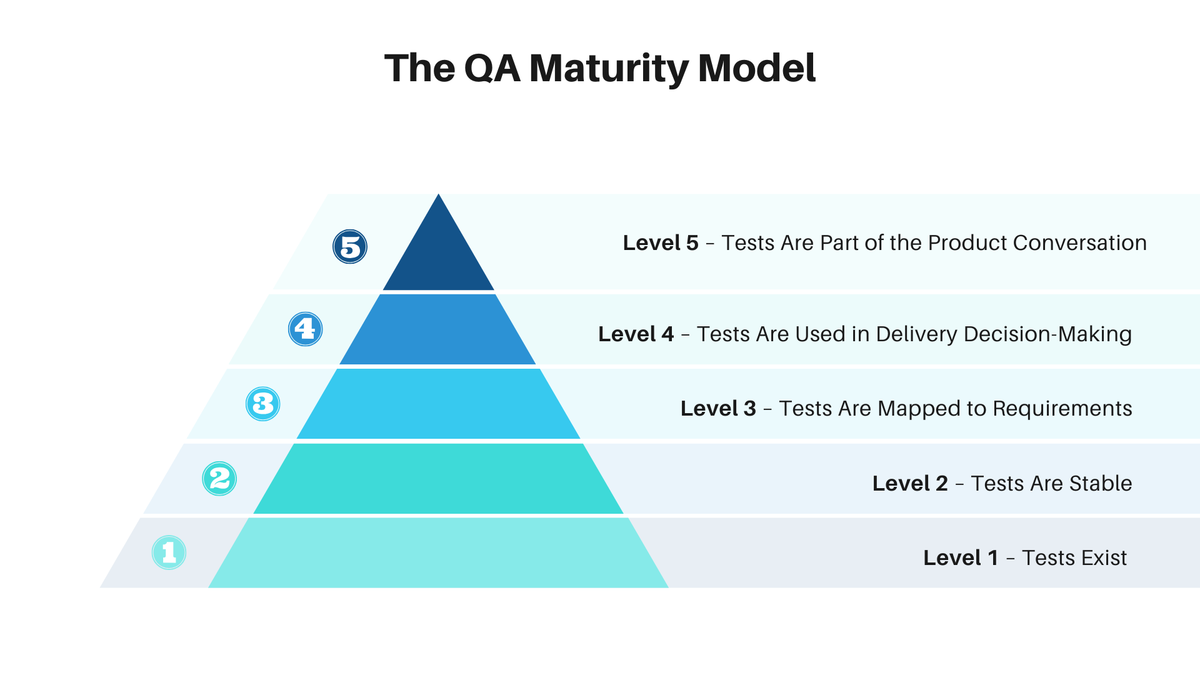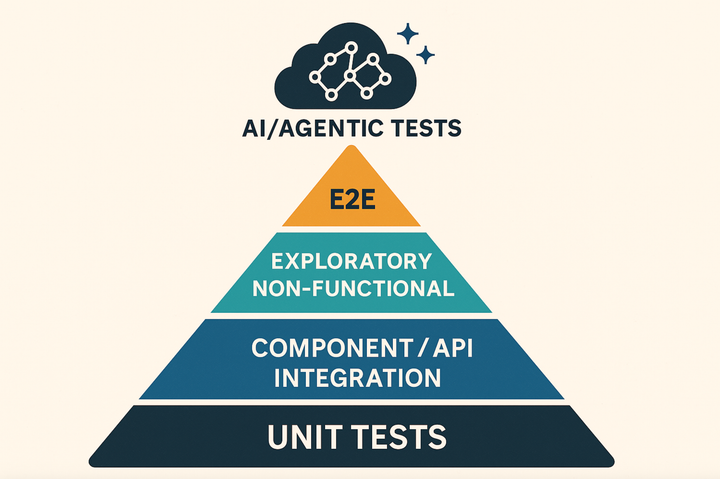The QA Pyramid Nobody Talks About

Everyone knows the Test Automation Pyramid.
You’ve seen the diagrams: unit tests at the base, service tests in the middle, UI tests at the top. It’s useful. It’s ubiquitous. And it helps teams think about cost, speed, and reliability.
But here’s the thing: there’s a second pyramid that matters just as much — especially if you're serious about evolving from "we write tests" to Quality Engineering.
Most teams never talk about it. Some don’t even know it exists.
I call it the QA Maturity Pyramid — and it tells you not what tests you have, but how well you're actually using them.
The QA Maturity Pyramid
Let’s walk through it, level by level:
🔹 Level 1 — Tests Exist
At this foundational stage, your team is writing automated tests — and that’s a win. Maybe it’s Playwright tests for the UI, API tests in Postman or RestAssured, or even just a few unit tests in your backend.
But here’s the catch: they’re often inconsistent, flaky, or redundant. Nobody’s quite sure which ones to trust. They’re treated more like code artifacts than product safeguards.
If someone asks “Do we have coverage for this?” the answer might be "I think so…?”
🔹 Level 2 — Tests Are Stable
Now you’re getting somewhere. You’ve invested time into cleaning up your test suite. Flaky selectors are fixed, waits are handled, and every test gives you a clear, reliable signal.
This is where confidence starts to build.
Teams no longer ignore test results. They break the build on failure. Tests aren’t just written — they’re trusted.
Still, they exist in isolation. They’re not yet connected to the why behind the feature.
🔹 Level 3 — Tests Are Mapped to Requirements
This is where things start to click.
Your tests aren’t just checking functionality — they’re traceable. Every automated test case ties back to a product requirement, a Jira story, or a Zephyr test case.
That means:
- You know what’s covered — and what’s not.
- You can generate coverage reports with confidence.
- You can say “This story is done” because the test that verifies it passed.
This level unlocks real test traceability — a critical piece for regulated industries, high-stakes deployments, and scaling teams.
🔹 Level 4 — Tests Are Used in Delivery Decision-Making
Now your tests aren’t just a part of the CI pipeline — they’re a signal in your release process.
Stakeholders look at the test dashboard before go/no-go decisions.
Engineers treat failing tests as blockers, not background noise.
Product managers trust automation enough to ask: “Can we release this build to customers today?”
And the answer depends — not on gut feel — but on test data.
🔹 Level 5 — Tests Are Part of the Product Conversation
This is rarefied air.
At this level, your test strategy is discussed in sprint planning. Automation priorities are aligned with roadmap goals. Quality is embedded into the development conversation — before a single line of code is written.
Engineers, testers, and PMs speak the same language when it comes to coverage, risk, and confidence.
Tests aren’t just verifying — they’re shaping how the product is built.
Why This Pyramid Matters
The QA Maturity Pyramid isn’t about tools. It’s not about frameworks. It’s about how your organization thinks about quality.
Two teams can have the same number of tests — but if one is operating at Level 2 and the other at Level 4, their release outcomes will be radically different.
- One gets surprised by bugs in prod.
- The other catches issues before they ever reach customers.
One struggles to justify QA investment.
The other proves ROI with every release.
This pyramid shows why test count alone is a vanity metric. What matters is how your tests are built, used, and trusted.
So… Where Does Your Team Live?
Take a moment and think about it:
- Do your tests exist… but aren’t reliable?
- Are they stable… but untraceable?
- Are they mapped to requirements… but ignored during releases?
- Or are they part of the strategic, product-wide conversation?
No judgment — just awareness. And from awareness, growth.
What Comes Next?
Share this with your team. Print the pyramid. Put it in your next test strategy doc.
And ask:
“What will it take for us to level up?”
If you're serious about scaling quality, automation, and delivery confidence — the QA Maturity Pyramid might just be your roadmap.
Which level is your team operating at today? Drop it in the comments — and let’s compare notes.



Comments ()